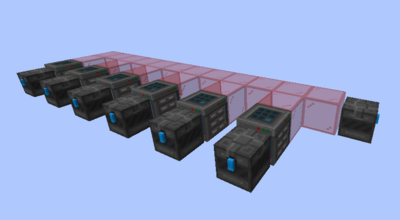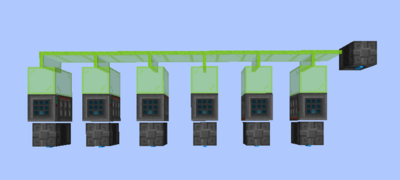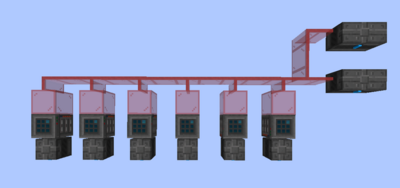Pipes
Pipes are a method of quickly moving items between containers. All pipe networks will have 4 main components: an input container, an extractor (crafting table), a length of pipes (Glass or stained glass), and an output container.
Basics
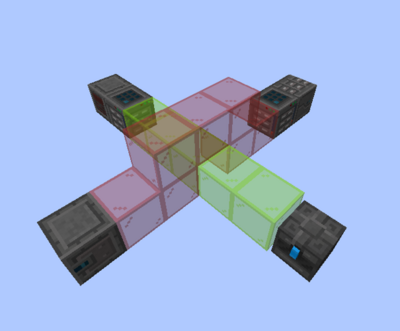
When an extractor and pipes are connected to a container, it will try to take items out of that container and move them down the pipe to another container. Items will not move from one colored pipe to a differently colored one.
Containers can be almost anything that holds items; this includes chests, barrels, droppers, dispensers, furnaces, and even decorated pots - but not hoppers.
When a pipe extracts items from a furnace, it extracts from the furnace output. When a pipe leads into a furnace, it will try to place items into both the bottom and top slots, but will only place items you can normally place into furnaces into them.
Pipe transfer is instant - the server moves as much as it possibly can from the input to the output in a single moment. It is impossible for you to lose an item in the middle of it going through a pipe.
Pathfinding
A very important detail for pipes is pathfinding. When the server is deciding where items should go in a pipe, and it comes to a crossroads where items could flow either way, it chooses one of those paths at random. This means that if your pipe system has lots of places where the glass splits and goes 2 different ways, your pipes will slow down a lot.
With the above example, the slowdown is small - it only takes a few seconds to work properly. However, every dead-end between the input and output doubles the time needed, and in large pipe networks, it quickly becomes way too slow. Thankfully, there are a few ways we can resolve ambiguity in our pipe systems.
Grindstones
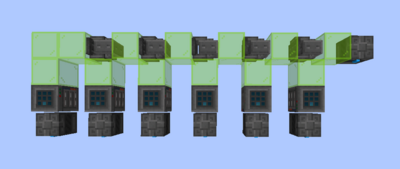
Grindstones act like pipes, but will always transmit items in the way they are facing. Grindstones are the easiest and most popular method for resolving ambiguous junctions in pipes.
Panes
Panes accept and give items to glass of the same color, and also work as pipes - however, they don't work the exact same. When items flowing through a pane reach a junction, they will always try to keep moving straight first before turning. This can be very useful when you want items to move a certain way, but be careful! If your pane pipes are made poorly, they might end up never extracting correctly.
